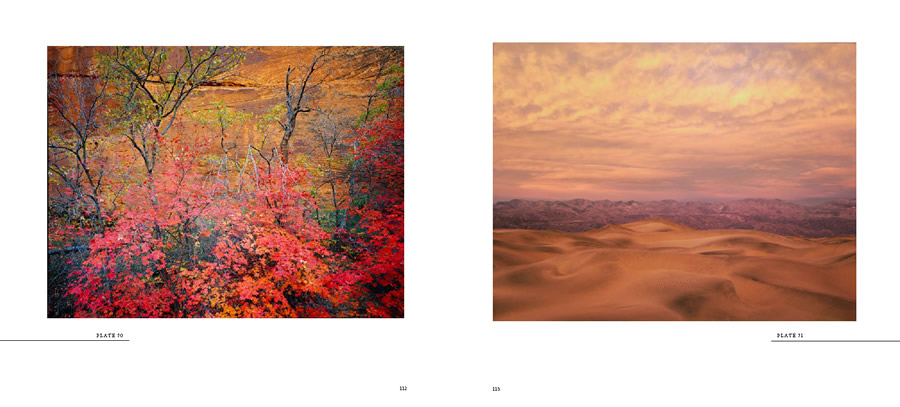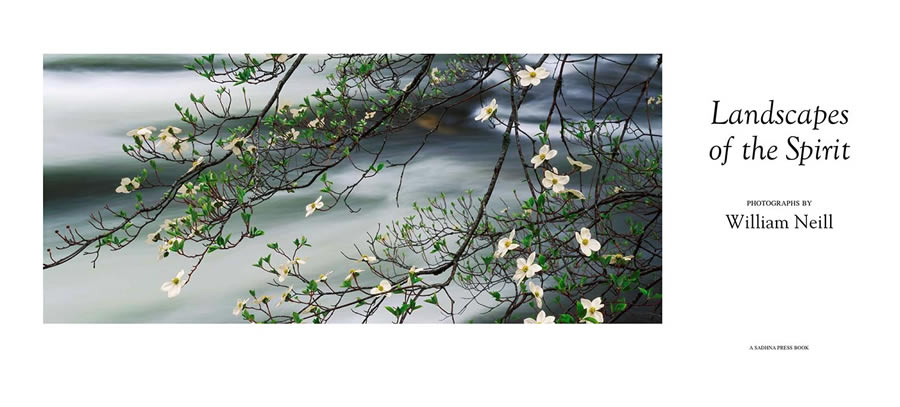Like many photographers I enjoy viewing and learning from the work of others. About 10 years ago I came acrossBill Neill‘sLandscape of The Spirit, and knew that I had found the work of a kindred spirit.
Over the years since I have frequently recommended this book to students and other photographers looking for inspiration, but regrettably it has been out of print for a while. Now, Bill has publishedLandscape of The Spiritin a downloadable Digital Edition for just $15. For not much more than the price of a lunch photographers can discover the work of one of America’s premier fine art landscape photographers.
Below is an essay written by Bill as an introduction to the 1996 edition of the book. I am very pleased to announce that Bill has agreed to write additional essays for this site from time to time, and I look forward to them as eagerly as I know you will.
– Michael Reichmann
June, 2008
________________________________________________________________
The beauty of nature motivates and inspires my photography. It nourishes my artistic sensibility and restores my spiritual balance. In landscapes of silent rock, reflecting water, and parting cloud, I feel most connected to myself and to life itself. In the clarity of wilderness light, my mind and my heart are soothed and uplifted by the serenity of Creation. These are landscapes of, and for, my spirit.
As a child I was exposed to the joys of the outdoors during family excursions from our home in the San Francisco Bay Area to the great western national parks. My response to nature was based largely on recreational pursuits until the summer of my 18th year, when I took a job in Glacier National Park in Montana. In the middle of that summer I was stunned to receive a phone call with news that my only brother, Jim, had suddenly died of a brain aneurysm. Just two years my senior, Jim was my friendly rival, my conscience, and most important, my close friend. I hurried home for the funeral and to help my grief-stricken parents, but soon fled back to my summer job in Montana. The trails in Glacier would become the beginning of my path to healing, and would lead me toward a life in photography.
As I mechanically performed my job, my thoughts whirled with unanswered questions about the premature death of such a kindred spirit and generous soul. Searching for a respite from grief, I backpacked through the wilderness and scrambled up the peaks with a near-desperate vigor. Long, hard hikes temporarily soothed my pain and helped me to fall into exhausted sleep at night. At some deep level, the beauty of my surroundings seeped into my subconscious—the lush colors of a meadow dense with wildflowers, the energy of a lightning storm, the clarity of a turquoise lake, the splendid perspective from a mountain peak.
The summer after my brother’s death I returned to work in Glacier, attracted by the place itself and by friends who had helped me through my most difficult time. This time I was equipped with a new Kodak Instamatic camera to document my travels for my friends and family. When I returned to college in the fall, I showed my landscape photographs to a friend, full of youthful zeal about my adventures and my new method of sharing them. As she flipped through my prints she remarked, “You should become a photographer!” She had seen in my casual snapshots what was invisible to me, and what my photography professor discerned a year later: a bond with the landscape, captured in two dimensions on film. I wanted to be a photographer from the moment she made her suggestion.
Page 58 from Landscapes of The Spirit
I scoured bookstores for inspiration, finding it plentiful in the work of Minor White, Wynn Bullock, Edward Weston, Paul Caponigro, Philip Hyde, Eliot Porter, and Ansel Adams. Here were artists dedicated to their art and to the land. I saw that photography could be a powerful tool to protect wilderness and to further the environmental cause. My visual explorations also began to capture a spiritual dimension, emerging from my journey of recovery. The beauty I discovered, both harsh and inviting, filled me with a sense of wonder and intimacy. As I reviewed the images I made over those early years, the most striking of them succeeded in reconnecting me to those precious moments of discovery. A life in photography offered a way to return the gift I was receiving—a path to healing and beauty.
A job with the National Park Service brought me to Yosemite National Park soon after graduation from college. An interval followed as photographer-in-residence at The Ansel Adams Gallery. The spirit of Yosemite took hold of me and the park became my home. The process of absorbing this extraordinary landscape enriched me profoundly as a photographer over the next two decades. To capture the fine details of my subjects, I decided to change from the 35mm format to a 4×5 view camera. The larger format camera, and the slow, meditative process it encouraged, helped me to find a more personal style as I searched for patterns and compositions within the seeming chaos of nature.
Seeing and feeling beauty is more vital to me than any resulting imagery. When the key elements of photography—light, composition, and emotion—are before me, I am fully engaged, yet detached, without expectations. The magic of my discovery—whether the dramatic light of a clearing storm or an intimate detail on the forest floor—recharges my spirit with a sense of wonder. The intensity of the experience makes me feel vibrant and alive, the necessary first step to creating a transcendent image.“Be still with yourself until the object of your attention affirms your presence,” describes Minor White. When I view the resulting transparencies, I have the possibility of reconnecting with these moments of beauty. Ultimately, as Minor White defines it, the most penetrating images reveal the essence of the subjectâ��forwhat it is . . . and for what else it is.”
The affirmation of beauty in landscape photography is my passion, in contrast to the genre of landscape photography which depicts “the truth” of the modern landscape, full of power lines, roads, and garbage. While exposing this conflict between man and nature is vital in today’s world, my own artistic and spiritual “truth” lies in depicting and celebrating beauty in what is left of our wild places.
The inspiration which guides my photographic efforts is inseparable from myneed for nature’s gift of solace and spiritual strength—an indispensable refuge for anyone beset with the demands of modern life. My experience has taught me that unspoiled nature is an essential source of healing and enlightenment—“the geography of hope,”as Wallace Stegner so eloquently suggests. Wild landscapes affirm a positive view of life and connect us with a more spiritual ecology.
I recently returned to Glacier, 23 years removed from my last visit there. I sat in the coffee shop where I had worked, and where I had received the news of my brother’s death. Although overwhelming sadness swept over me at the memory, I could look back with satisfaction at my life since that day. The process of healing from tragedy had helped me to find an enduring friend and inspiration in wild places. The photographs collected here bear witness to an awakening to the glories of nature that began many years ago in the mountains of Glacier. May wildness survive and its spirit continue to heal and sustain us.
Yosemite National Park, July 1996
Landscapes of The Spirit Digital Edition
You May Also Enjoy...
Girl in Ruins Bangladesh
Please use your browser'sBACKbutton to return to the page that brought you here.



